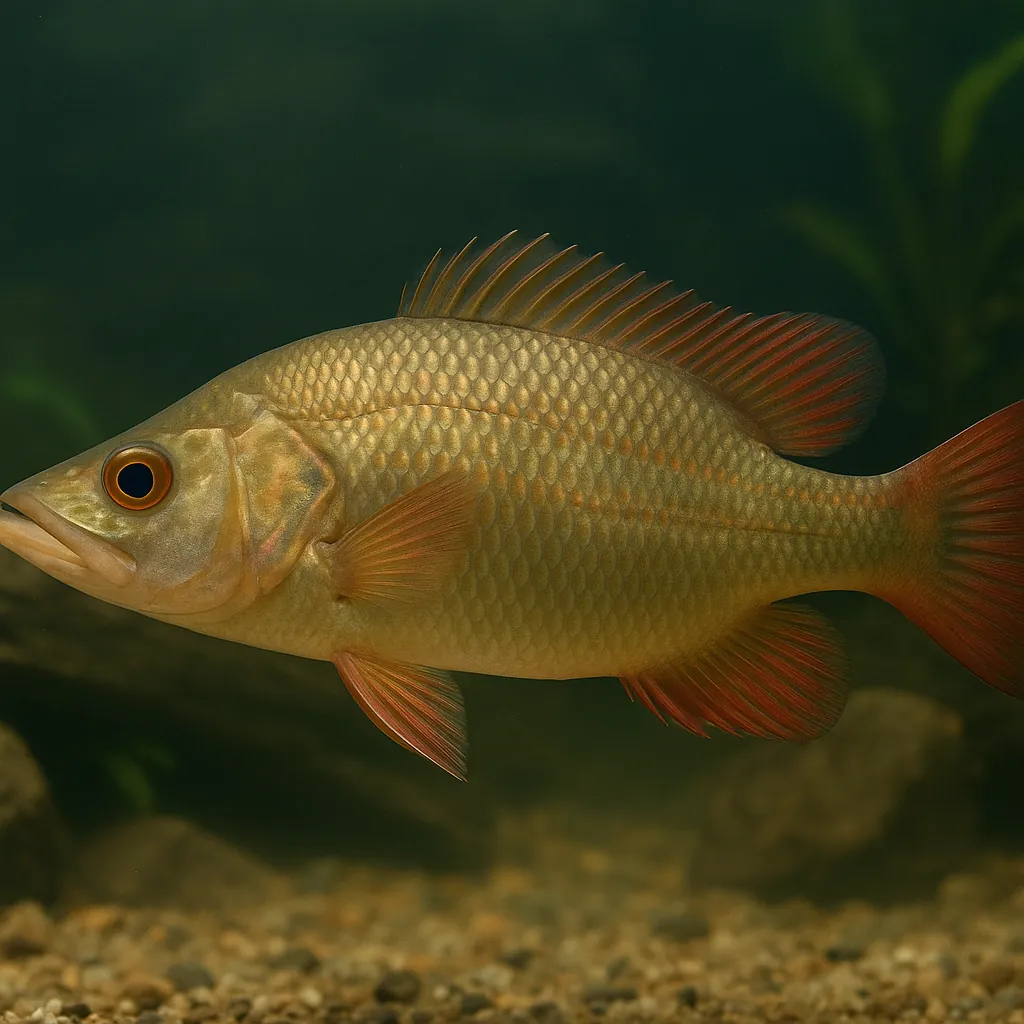
Red bay snook
Introduction
The Red Bay Snook (Petenia splendida) is a striking cichlid native to Central America, renowned for its vibrant red coloration and unique body shape. This species appeals to aquarists seeking a large, visually impressive fish with engaging behaviors. While their beauty is undeniable, Red Bay Snooks require substantial care and space, making them more suitable for intermediate to experienced fishkeepers.
What makes the Red Bay Snook a standout choice for aquarists?
Its brilliant red hues and distinctive body structure make it a captivating centerpiece in large aquariums.
Is the Red Bay Snook suitable for beginners?
Due to their size and specific care requirements, they are better suited for aquarists with some experience.
Care and Environment
Proper care for the Red Bay Snook involves attention to tank size, water parameters, diet, and tank setup to ensure a healthy and thriving environment.
What is the minimum tank size for a Red Bay Snook?
A minimum of 450 liters is recommended for a single adult, with larger tanks required for multiple specimens.
What are the ideal water parameters for this species?
Maintain a temperature between 24°C and 30°C, pH levels from 7.0 to 7.5, and water hardness between 10 to 20 dGH.
Filtration should be robust to handle the substantial bioload of these large fish. Moderate water movement is ideal, simulating their natural slow-moving river habitats. Lighting can be standard, but providing shaded areas with decor is beneficial.
As carnivorous predators, Red Bay Snooks thrive on a diet of high-quality cichlid pellets supplemented with live or frozen foods like shrimp, earthworms, and krill. Feeding once or twice daily, offering only what they can consume in a few minutes, helps maintain water quality.
Tank decor should include sturdy structures like large rocks and driftwood to provide hiding spots and territorial boundaries. A soft substrate such as sand or fine gravel is recommended to mimic their natural environment. Ensure decorations are securely placed to prevent toppling, as these fish may rearrange their surroundings.
Are there specific challenges in keeping Red Bay Snooks?
They can be territorial, especially during breeding, and may exhibit aggression towards smaller tank mates. Monitoring their behavior and providing ample space can mitigate these issues.
Origin and Habitat
Red Bay Snooks are native to Central America, specifically found in Mexico, Guatemala, and Belize. They inhabit lakes and the lower and middle reaches of large, slow-moving rivers, often around soft-bottomed areas with sandy or muddy substrates. These environments are typically rich in vegetation, providing ample hiding spots and hunting grounds for this predatory species.
What type of water bodies do Red Bay Snooks prefer?
They thrive in slow-moving rivers and lakes with soft substrates and abundant vegetation.
Do they experience seasonal variations in their natural habitat?
While specific data is limited, like many tropical fish, they may experience seasonal changes in water parameters and food availability.
Temperament and Compatibility
Red Bay Snooks are moderately peaceful but can be territorial, especially during breeding. They are predatory and may consume smaller fish, so choosing appropriate tank mates is crucial.
Can Red Bay Snooks be kept with other fish?
Yes, but they should be housed with similarly sized and temperament-matched species to prevent predation.
What are suitable tank mates for Red Bay Snooks?
Compatible companions include large cichlids like Jack Dempseys, Silver Dollars, and large Plecos. Always monitor interactions, especially during initial introductions.
To create a harmonious tank community, provide ample space and hiding spots to reduce territorial disputes. Avoid housing them with smaller or more passive fish to prevent aggression or predation.
Interesting Facts
The Red Bay Snook exhibits fascinating behaviors and traits that intrigue aquarists. For instance, they have an extendable jaw structure, allowing them to engulf prey efficiently. This adaptation makes them formidable ambush predators in their natural habitat.
How does the Red Bay Snook's coloration develop over time?
Juveniles display a black and silver pattern, which transitions to a pinkish or mottled hue as they grow, eventually intensifying to a rich, rosy red in adults.
Are there different color morphs of the Red Bay Snook?
Yes, besides the popular red form, there is also a greenish color morph known as the Green Bay Snook.
These unique characteristics, combined with their striking appearance, make the Red Bay Snook a captivating species for dedicated aquarists.
Sources
All information in this article has been gathered from the following reputable sources:
Overview
Recommended Tank Size 179.6 Gallons (for groups of 6 or more) |
Minimum Group Size 1 |
Minimum Tank Volume 118.9 Gallons |
Maximum Adult Length 19.7 inches |
Average Adult Length 11.8 inches |
Shoaling (6+ required) No |
Preferred Water Type Freshwater, neutral to slightly alkaline |
Temperature Range (°C) 24–30 |
pH Range 7.0–7.5 |
Water Hardness (dGH) 10–20 |
Typical Lifespan (years) 10 years |